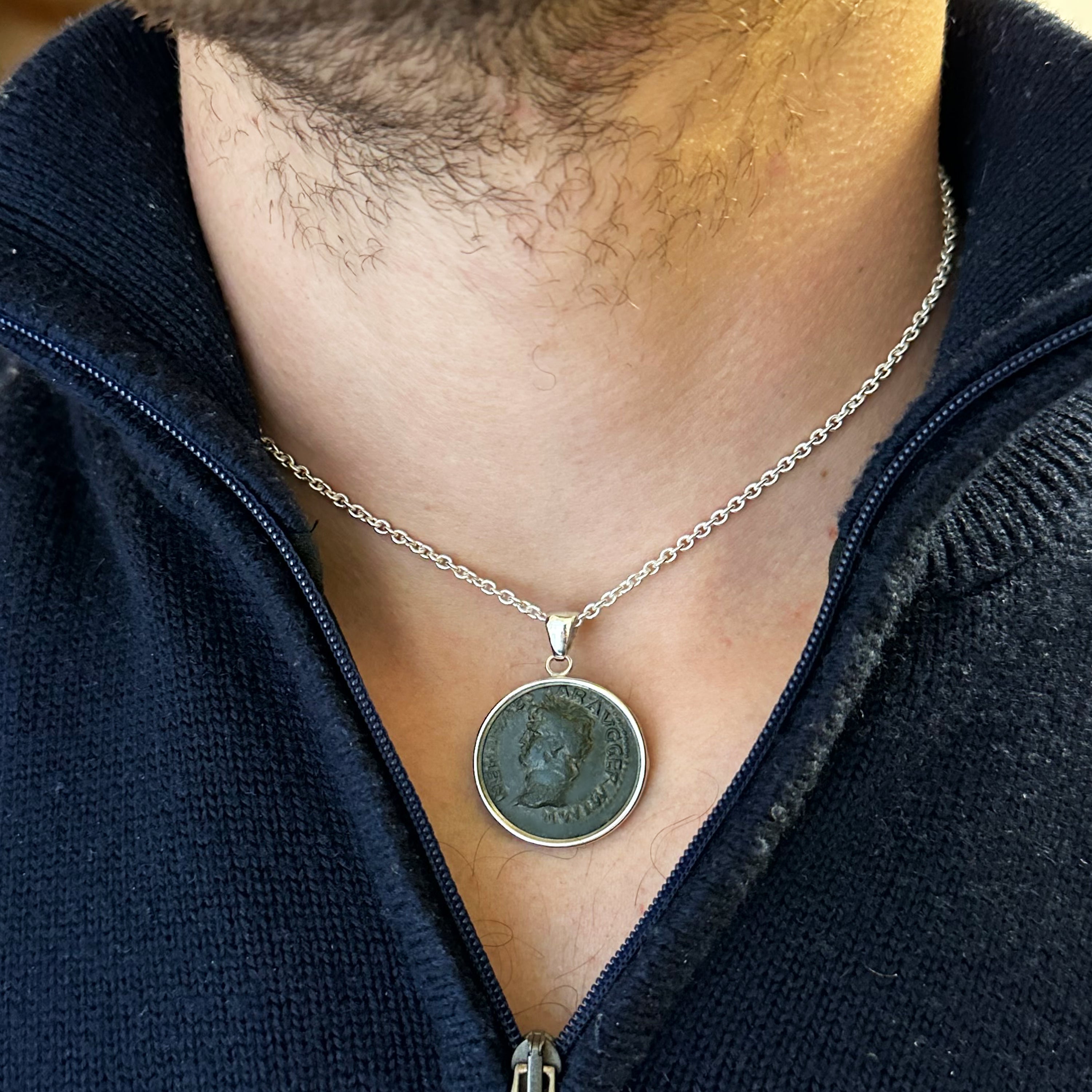Emperor Nero bronze coin (1st cent.BC ) sterling silver pendant; Victory with shield in the reverse side
• Handmade 100% Made in Italy
• Genuine Roman Bronze Coin 1st cent. BC
• Bezel material: Sterling Silver 925
Regular price
£665.00
Unit price
/
Unavailable
An authentic (1st cent. BC ) Roman bronze coin depicting the Emperor Nero has been set in this sterling silver pendant; on the reverse is visible Victory advancing from the left, carrying a schield with the inscription SPQR. The inscription SC means "senatus consulto" (or "by order of the Senate")
Nero was Roman emperor from 54 to 68, the last ruler of the Julio-Claudian dynasty. Born Lucius Domitius Ahenobarbus, he was the son of Gnaeus Domitius Ahenobarbus and Agrippina the Younger, the sister of Emperor Caligula. Nero's father died in 40, and his uncle was murdered in 41. Nero's great-uncle Claudius then ascended the throne. Agrippina married Claudius, who adopted Nero as his heir. Nero succeeded Claudius upon the latter's death in 54.
During the early years of his reign, Nero was content to be guided by his mother Agrippina, his tutor Seneca, and his Praetorian prefect Sextus Afranius Burrus
Nero's rule is usually associated with tyranny and extravagance. Most Roman sources, including Suetonius and Cassius Dio, offer overwhelmingly negative assessments of his personality and reign; likewise, Tacitus claims that the Roman people thought him compulsive and corrupt. Suetonius tells that many Romans believed that the Great Fire of Rome was instigated by Nero to clear the way for his planned palatial complex, the Domus Aurea. According to Tacitus he was said to have seized Christians as scapegoats for the fire and burned them alive, seemingly motivated not by public justice but by personal cruelty. Some modern historians question the reliability of the ancient sources on Nero's tyrannical acts, however.
Nero was Roman emperor from 54 to 68, the last ruler of the Julio-Claudian dynasty. Born Lucius Domitius Ahenobarbus, he was the son of Gnaeus Domitius Ahenobarbus and Agrippina the Younger, the sister of Emperor Caligula. Nero's father died in 40, and his uncle was murdered in 41. Nero's great-uncle Claudius then ascended the throne. Agrippina married Claudius, who adopted Nero as his heir. Nero succeeded Claudius upon the latter's death in 54.
During the early years of his reign, Nero was content to be guided by his mother Agrippina, his tutor Seneca, and his Praetorian prefect Sextus Afranius Burrus
Nero's rule is usually associated with tyranny and extravagance. Most Roman sources, including Suetonius and Cassius Dio, offer overwhelmingly negative assessments of his personality and reign; likewise, Tacitus claims that the Roman people thought him compulsive and corrupt. Suetonius tells that many Romans believed that the Great Fire of Rome was instigated by Nero to clear the way for his planned palatial complex, the Domus Aurea. According to Tacitus he was said to have seized Christians as scapegoats for the fire and burned them alive, seemingly motivated not by public justice but by personal cruelty. Some modern historians question the reliability of the ancient sources on Nero's tyrannical acts, however.
Emperor Nero bronze coin (1st cent.BC ) sterling silver pendant; Victory with shield in the reverse side











